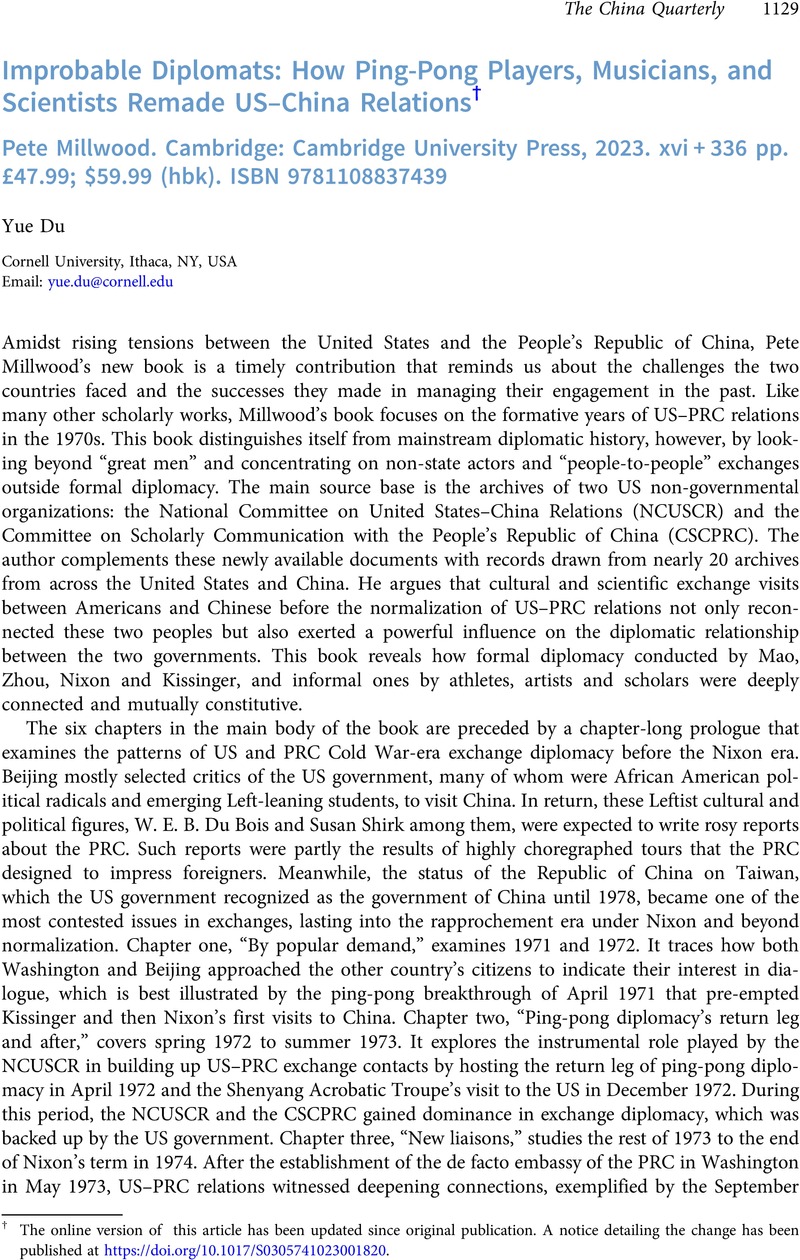No CrossRef data available.
Improbable Diplomats: How Ping-Pong Players, Musicians, and Scientists Remade US–China Relations† Pete Millwood. Cambridge: Cambridge University Press, 2023. xvi + 336 pp. £47.99; $59.99 (hbk). ISBN 9781108837439
Review products
Improbable Diplomats: How Ping-Pong Players, Musicians, and Scientists Remade US–China Relations† Pete Millwood. Cambridge: Cambridge University Press, 2023. xvi + 336 pp. £47.99; $59.99 (hbk). ISBN 9781108837439
Published online by Cambridge University Press: 15 November 2023
Abstract
An abstract is not available for this content so a preview has been provided. Please use the Get access link above for information on how to access this content.

- Type
- Book Review
- Information
- Copyright
- Copyright © The Author(s), 2023. Published by Cambridge University Press on behalf of SOAS University of London
Footnotes
†
The online version of this article has been updated since original publication. A notice detailing the change has been published at https://doi.org/10.1017/S0305741023001820.
A correction has been issued for this article:
Linked content
Please note a has been issued for this article.



